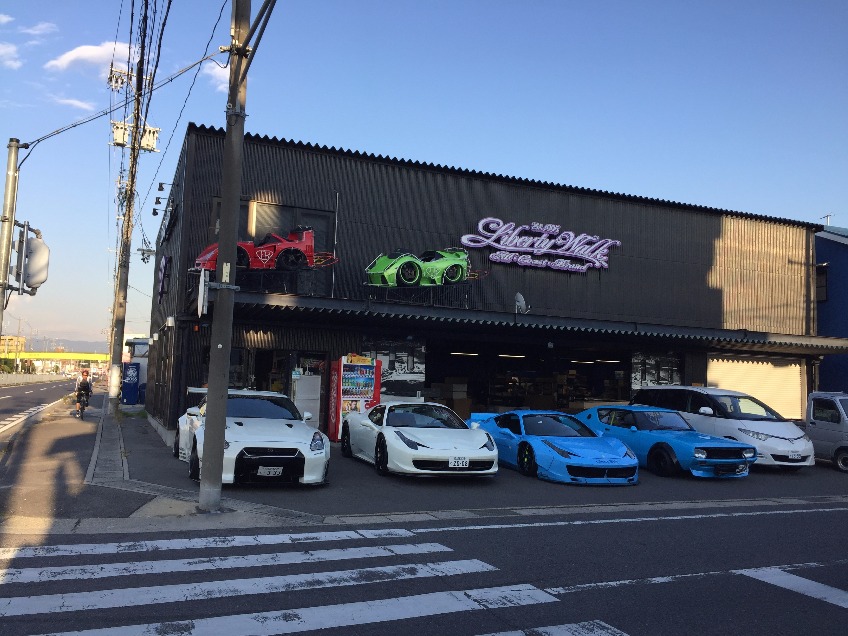Japan has a charming side but also a perplexing one. Cutting-edge technology and courtesy are coupled with authoritarianism and the punishment of just critics in business life.
I had to wait unpleasantly long minutes in the toilet at the Seoul airport and not because of the infamous Indian cuisine—I would not have ever thought that the simple task of flushing a toilet could be as tough as a minor IQ-test. Having tried about 13 different buttons, I still had no idea which of them does the flushing, but I already had two different squirts, music, gurgling, warming, self-cleaning and the only thing I basically miss are the flying unicorns. Having given up the fight, I leave slamming the door and this is the moment where I hear the flushing. Yes, there are cultural differences, even in things that I would not have ever dreamt of.
After a very lovely flight, Gyuri, the journalism scholar of Bridge Budapest, and I arrive with our new mentor, Tibi to Tokyo. There are a lot of impulses, everything makes music, moves, flashes and is precise, safe and hyper-cute.
“The Japanese are very polite and modest, respect and loyalty are above everything, but the thing I most like in them is that they are very helpful and that they smile all the time.” Speaks Tibi with enthusiasm felt about our arrival, while we are buying our train tickets from the vending machine which most resembles a slot machine to get to the hotel. At the station, information is pushed into our faces in a nearly incomprehensible quantity. There are a great many moving, singing effects on the train and a cute little animal figure waves back from every corner. And the global rumour is true, the Japanese really queue for boarding the train and it comes with accuracy to the second. We take the distance from the station to the hotel under the ground on moving footways, which seems endless after the long journey. But we are not bored as our mentor is explaining with childish enthusiasm that it is fairly common there because it rains very often, and the population density is so high that constructions go both upwards and downwards and we should see that there is a huge mall over every tube station.
NNG already has two offices in Japan, one in Tokyo and the other one is 350 kilometres far in Nagoya, the city of three million. We will visit the latter one on the first day with the Japanese super express train, the Shinkansen. About 1,200 passengers can board a single train, it comes every 5 minutes in the peak and is practically always full. The average delay is less than 20 minutes on a yearly scale but this includes even multiple days long breakdowns due to natural disasters as well—so practically it is never late. I am fully amazed to see this astonishingly long train wonder crawling into the station and my children’s railway loving self is waiting with mesmerisation to speed up to 300 km/h while we are rushing towards our goal. It is true that you cannot feel the speed but the iGO Navigation is not wrong.
Nagoya is a lovely small town they were having their autumn carnival with their cheerleaders dancing in colourful clothes, ladies in their kimono and musicians. We do not have a lot of time to stare around because we are on our way to a workshop visit at Liberty Walk which is something like a startup but is a worldwide famous Japanese tuning company.
Wataru Kato was 26 when he founded the company and in the beginning the workshop could work on 3 cars simultaneously at the same time, today however one can see more than twenty luxury cars of special design in the display room in Komaki. They of course have a fanshop and we can submit our own order if we wanted to make our luxury sports car in the garage a bit more unique.
I am not a great car fan (and I even do not like to drive) but the displayed pieces are really nice and even the idea is amazing that they cut off the covering of luxury cars worth many hundred millions while they are making every kit. They have representative offices in many countries of the world outside Japan and they have their own shop in the United States. The company has two main divisions, LB Performance tunes up luxury cars with aftermarket kits from the exhaust to the spoiler while LB Works stands for cutting-edge technology. The stylistic elements of their famed kits were inspired by Nissan racing cars of the seventies as their central part is the mudguard that almost scrubs the ground. It is not a coincidence that this design could become popular in Japan, I do not dare imagine what the Hungarian roads would do with these wonders of design.

After the visit we were wondering whether Liberty Walk can be regarded as a startup. Anyway who knows a relatively young Japanese company built on innovation? The silence is heavy, even the Japanese colleagues find it difficult to mention somebody except Fujitsu although it is everything but young and is not a startup. Liberty Walk is a good example of how amazingly good the Japanese are in design, in accurate and perplexingly precise execution but only within the limits of their hierarchy.
While we are travelling on the Shinkansen Tibi is telling us interesting stories about the functioning and work culture of large local companies which is mostly terrifying for a twentysomething European. “Loyalty is so predominant that most of the people spend their entire life working for the same company. We regard diverse experience and flexibility as positive things but they are rather disadvantages in Japan. Stepping forward does not come from unique ideas but from patience. For example if a decision maker says something silly and somebody below him in the hierarchy mentions that, the latter would be fired but if he or she executes the plan doomed to failure right from the onset with servility then appraisal would come and promotion will be secure after a couple years of work.”
In addition cultural isolation and the attitude of suspicion towards foreigners make the flow of new ideas even more difficult. 98.5 percent of the population is Japanese It is not a secret that the local companies hire each other as their suppliers rather than working with the much cheaper and more effective foreign companies. Overemployment is a typical phenomenon though its extent does not come near to that of India. While a task is done by three people back at home the same would be dealt with by five here. Every negotiation is permeated by the respect to hierarchy, every minute of a presentation is precisely scheduled according to who, when and what may say. The leader of a Japanese partner company did sensibly perplex at a business dinner when I dared ask him a professional question while I was only an intern.
“But where does development come from and what makes the economy run?” – was my question to Tibi who is more familiar with the local relations. “Domestic consumption is great, precision is a value in the IT sector and although Japan is continuously losing its competitiveness, do not forget that they are nearly 130 million and they are opening up more and more as they do not have a choice.”



